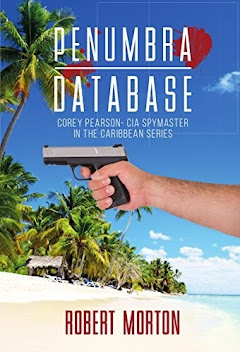 |
| He looked like just another employee at Boeing—until the CIA's blueprints for the new spy plane started leaking to Moscow |
Espionage
isn’t all tuxedos, shaken martinis, and rooftop chases. It’s much quieter than
that—more clipboard than car chase. The real magic happens when someone walks
into a secure facility wearing a name tag, not waving a gun. That’s what makes
undercover infiltration so dangerous—and so effective. It’s also exactly what
happens in The
Hunt For A Russian Spy, where CIA operative Corey
Pearson slides into a job at Boeing under a flawless alias to hunt down a
Russian mole.
In the story, Corey becomes “Brian
Carter,” a junior maintenance tech inside Boeing’s defense wing. Nothing
flashy. No spotlight. Just another blue-collar guy fixing pipes and staying
invisible. But that’s the whole point. His low-level job gives him unrestricted
access to sensitive areas of the facility, including where engineers are
developing a next-gen spy plane. It’s the kind of role real CIA operatives are
trained to seek out—jobs that get them close to the action without ever being
noticed. Because in spycraft, high access with low scrutiny is gold.
That’s where the concept of a “legend”
comes in. Not legend as in folklore, but the intelligence world’s term for a
fabricated identity so deep and detailed, it can survive real-world pressure.
We’re talking full employment history, military service records, driver’s
licenses, online footprints, even fake ex-girlfriends if needed. It has to hold
up to surveillance, questioning, and digital digging.
In The Hunt For A Russian Spy,
Corey’s legend is solid—he’s supposedly an Air Force mechanic, and he carries
himself like one, down to the grease under his fingernails and the slang he
uses in the breakroom. He’s not pretending to be Brian Carter—he is
Brian Carter. That’s exactly how it works in real life.
The CIA has an entire division dedicated
to this level of identity engineering. Officers operating under non-official
cover (known as NOCs) often embed themselves in corporate or civilian roles,
without the safety net of diplomatic protection. If they get caught, they’re on
their own. These deep-cover operatives are trained to not just play the part,
but live it—sometimes for years. That’s why they’re so hard to catch. And
that’s why foreign intelligence services, like Russia’s SVR and GRU, have tried
to mimic the same methods on U.S. soil.
There are real examples that mirror the
fictional setup in The
Hunt For A Russian Spy. Back in 2010, the FBI busted
the “Illegals Program”—a network of Russian spies who had lived in the U.S. for
years under false identities, blending into suburbia, even raising families.
Their mission? Get close to political and business elites.
More recently, there have been repeated
cases of Russian nationals attempting to infiltrate American defense
contractors, including Boeing. One case involved Russian intelligence
operatives using commercial attaché positions and fake identities to gather
information on U.S. aerospace projects. Another involved Yevgeny Buryakov, a
Russian banker in New York, who was secretly collecting economic intelligence
on behalf of the SVR.
The reality is, espionage isn’t about
breaking in—it’s about being let in. And once someone’s inside, wearing a badge
and sharing lunch in the breakroom, it’s hard to tell the difference between a
janitor and a spy. That’s what makes Corey’s role in The Hunt For A Russian
Spy hit so hard. The mole he’s hunting isn’t sneaking in through the vents;
he’s already inside, probably cracking jokes with the engineers over coffee.
And this is why infiltration and legend
creation are such essential tools in modern espionage. The most dangerous
operatives aren’t the ones hacking from afar—they’re the ones standing right
next to the server rack, pretending to fix a light.
In the end, The
Hunt For A Russian Spy doesn’t just tell a gripping
story—it pulls back the curtain on how real spy games are played. It reminds us
that in the world of intelligence, the best disguises aren’t flashy—they’re
ordinary. And that’s what makes them so lethal.
Robert Morton is a member of the Association of Former Intelligence Officers (AFIO) and an accomplished author. He writes the Corey Pearson- CIA Spymaster Short Story, blending his knowledge of real-life intelligence operations with gripping fictional storytelling. His work offers readers an insider’s glimpse into the world of espionage, inspired by the complexities and high-stakes realities of the intelligence community.





No comments:
Post a Comment